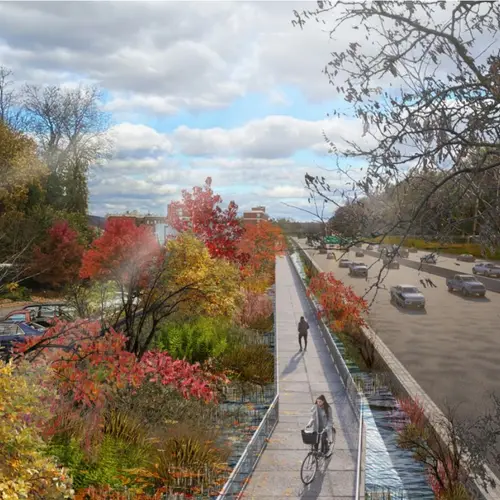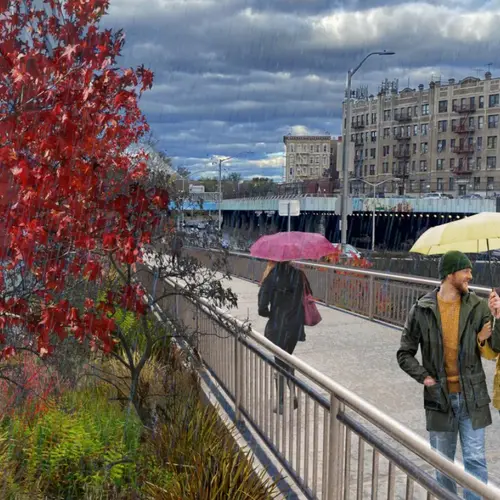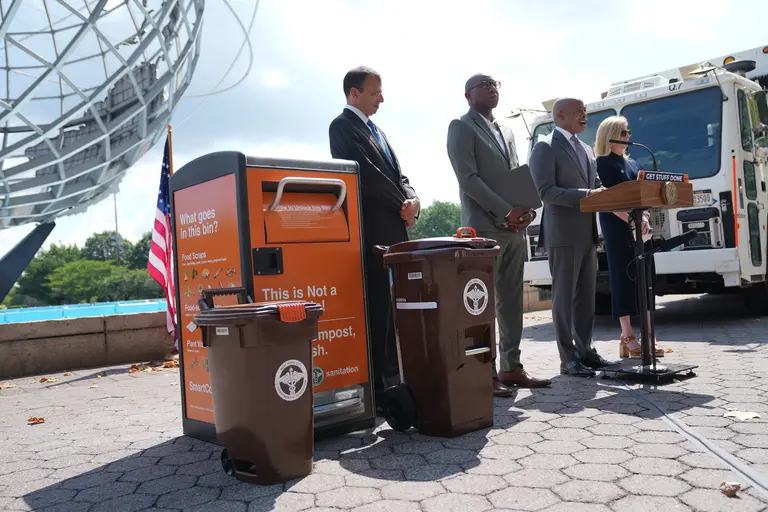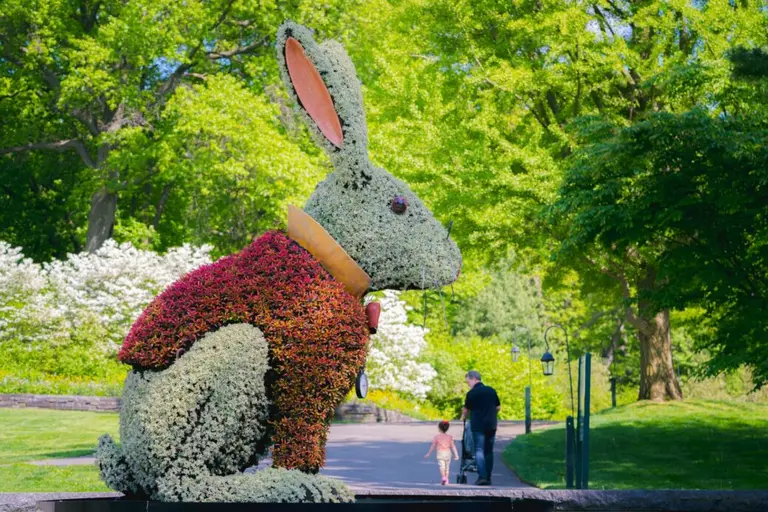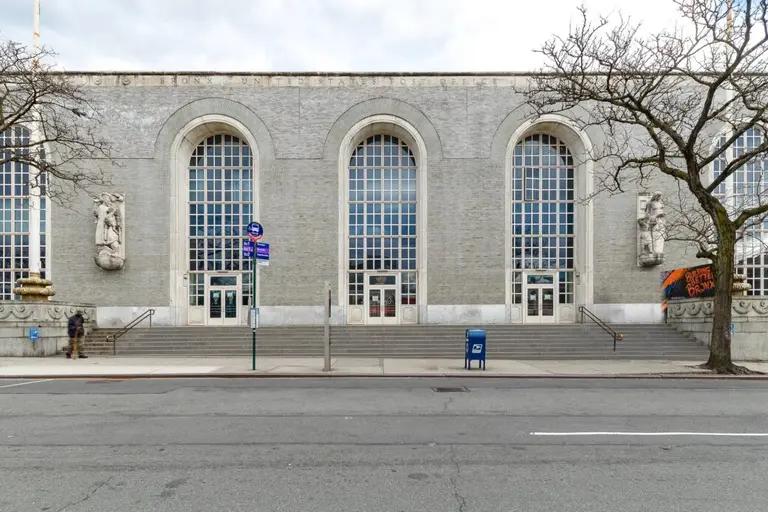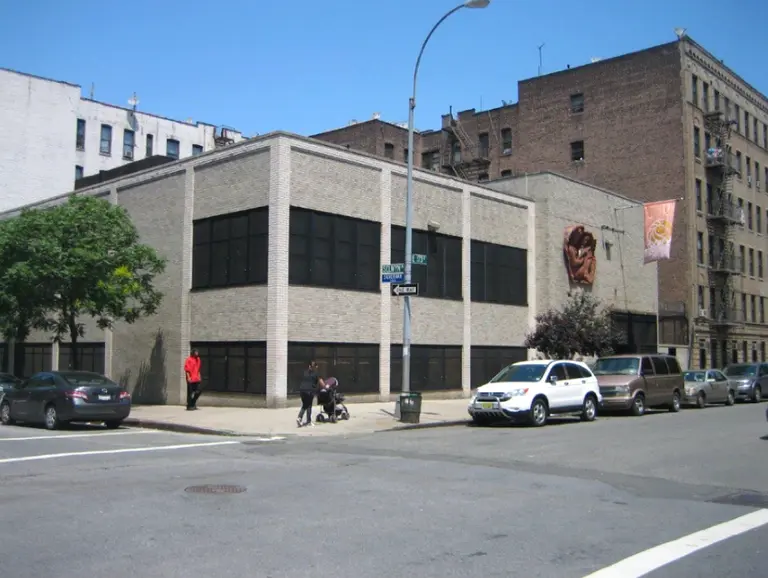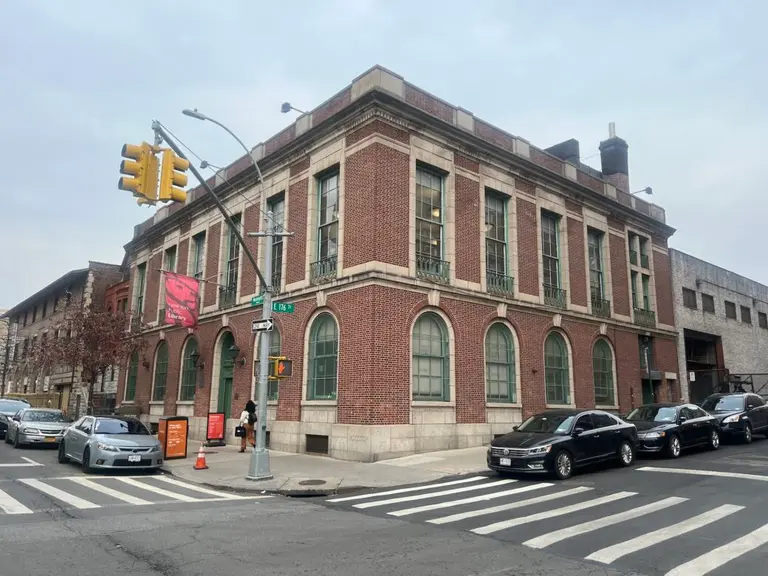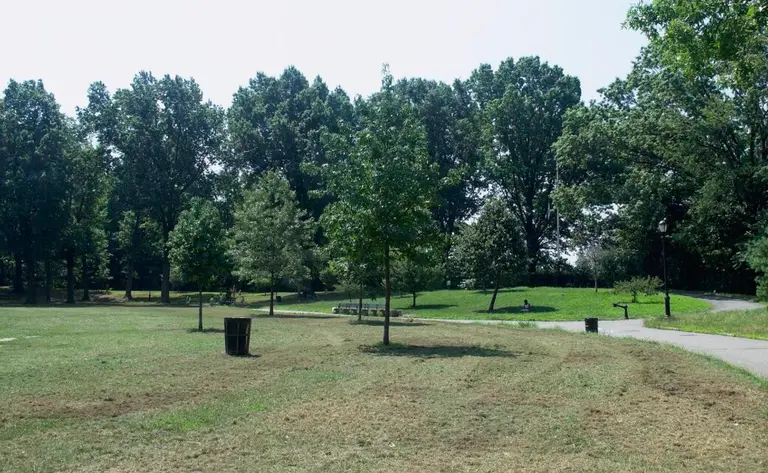Plan to bring Van Cortlandt Park’s Tibbetts Brook above ground moves forward
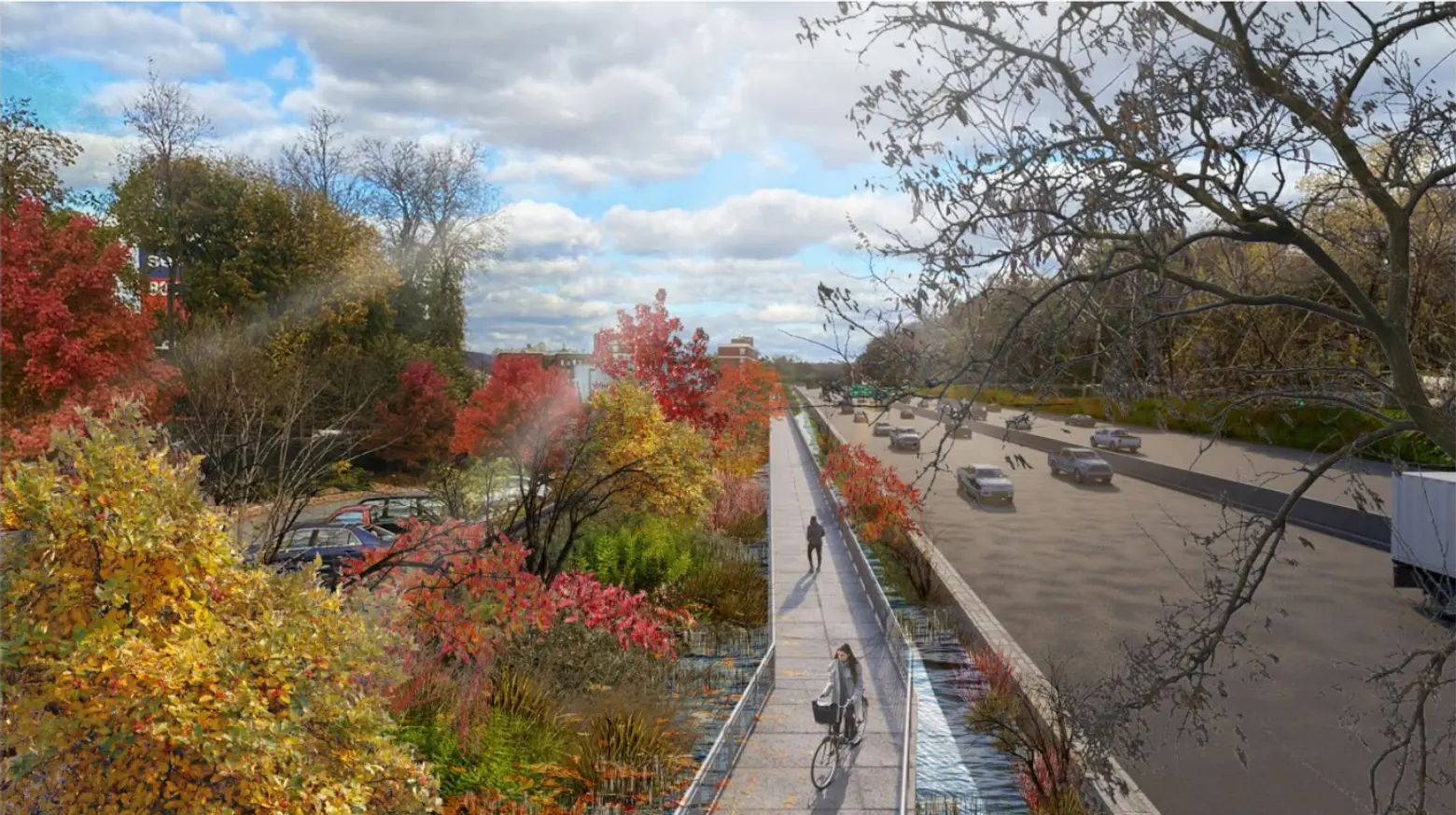
Renderings courtesy of the NYC Department of Environmental Protection
A plan to unearth parts of a body of water in the Bronx that has been covered for more than a century is moving forward. The New York City Public Design Commission on Monday unanimously approved the preliminary design plan for the Tibbetts Brook Daylight and Greenway Project in Van Cortlandt Park, a project that will help remove the brook’s clean water from the sewer system and ultimately reduce flooding and sewage overflow into the Harlem River. The $133 million project could face delays due to the Metropolitan Transportation Authority, which owns the land that is part of the construction project, according to the City.
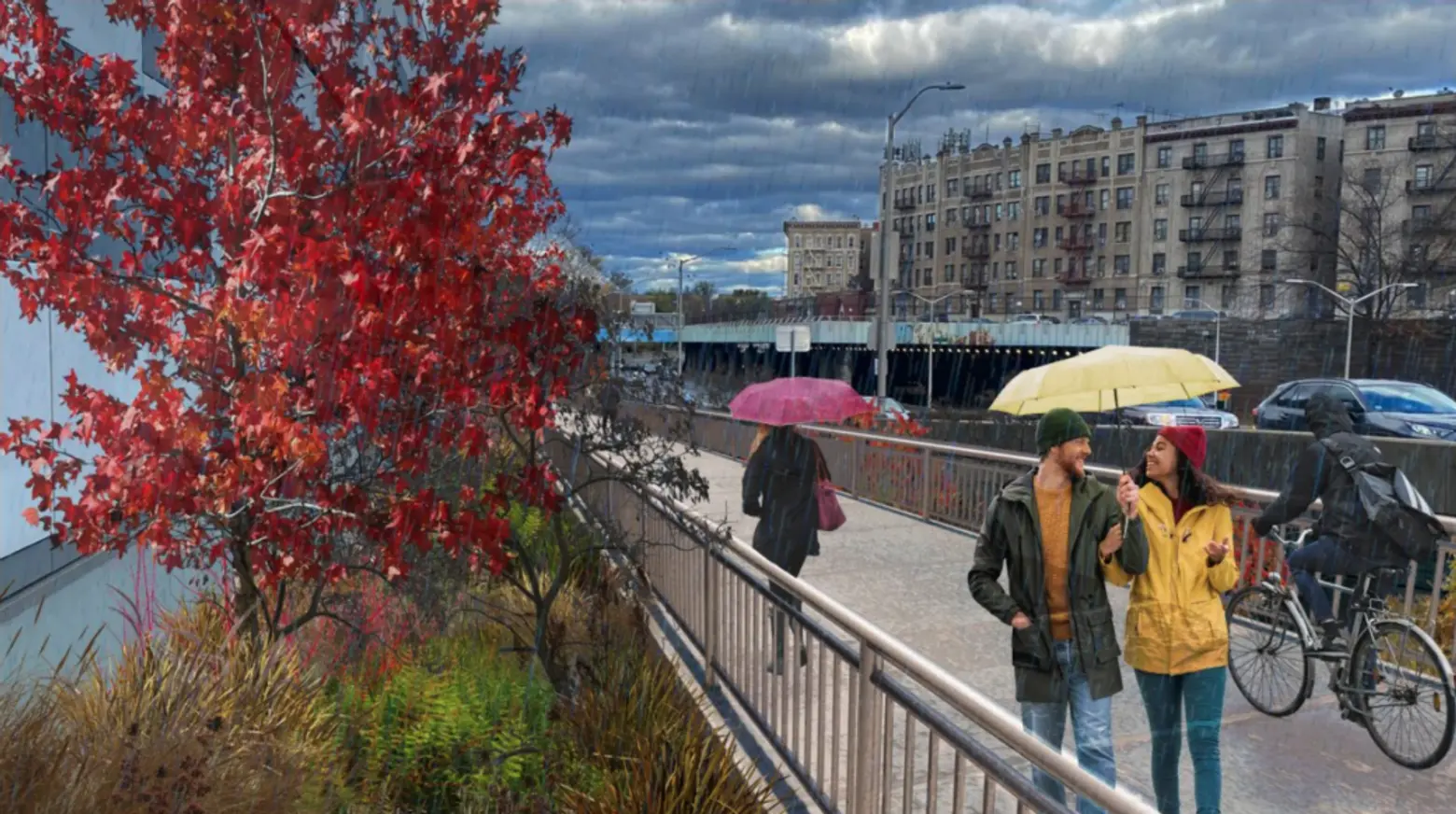
As part of the plan, roughly 1.8 miles of Tibbetts Brook would be moved above ground starting from Hester and Piero’s Mill Pond in Van Cortlandt Park to the Harlem River. The project would lessen the amount of clean water entering Kingsbridge’s sewer system and reduce sewage overflow into the Harlem River by approximately 220 million gallons per year, according to a report by the city’s Department of Environmental Protection.
Besides substantial improvements to the area’s sewage system, the project would make ecological enhancements along the daylighted brook, and extend the Putnam Greenway by 1.2 miles from Van Cortlandt Park to West 230th Street, which builds upon Mayor Eric Adams’ plan to extend the Harlem River Greenway. These improvements will make the park more accessible to the community and further reduce potential flooding by increasing greenspace, according to the Van Cortlandt Park Alliance.
In January, Mayor Eric Adams announced that the city had purchased the land necessary to make the infrastructure improvements from railroad freight company CSX Transportation for $11.2 million, according to the Bronx Times.
Tibbetts Brook starts in Yonkers and runs through Kingsbridge before ending in Spuyten Duyvil Creek. The stream used to be entirely aboveground before the area’s waterways were filled in around 1900 to make space for new developments.
With the commission’s approval, city agencies can now begin to finalize a request for bids to construct the project, according to Karen Argenti, board secretary for the Bronx Council for Environmental Quality.
Still, the project may face complications due to the MTA’s ownership of the property, which stretches from West 225th Street to West 230th Street. The area is the location of the transit agency’s Bronx North Yard, where the Marble Hill Metro-North station sits on the Hudson River. Engineers for the project would need access to pipes and infrastructure that lie below the railroad tracks.
“[It] was part of the original design decades ago, and MTA who owns that property does not seem to be willing to cooperate with the city, and that is very important if we can make this greenway go further south,” Chauncy Young, representing the Harlem River Working Group, a coalition of community organizations and governmental agencies aiming to improve the quality of the river, testified during Monday’s hearing.
Another potential obstacle is rumors that the MTA is considering transferring its waste management from Grand Central Station to Marble Hill, which would put their previous agreement to transfer the land to the city’s Parks Department at risk, according to a source familiar with recent conversations between the transit agency and local officials.
However, an MTA spokesperson stated that there were no intentions whatsoever to transfer the land to the city. According to them, during a meeting held in February, the MTA turned down a request to give over their yard space for the greenway project. They claimed that giving away their land would severely impact Metro-North operations and require the disconnection of the Hudson Line from Grand Central Terminal.
“The Bronx North Yard is an active rail facility, encompassing critical and necessary infrastructure to Metro-North operations,” Ray Raimundi, an MTA spokesperson, told the City. “Metro-North will continue to engage with its partners in the City on ideas and solutions to make the Bronx greener without sacrificing operations of the railroad and the hundreds of thousands of riders it transports daily.”
The project is expected to break ground in 2025, with construction to be completed in 2028.
RELATED:
